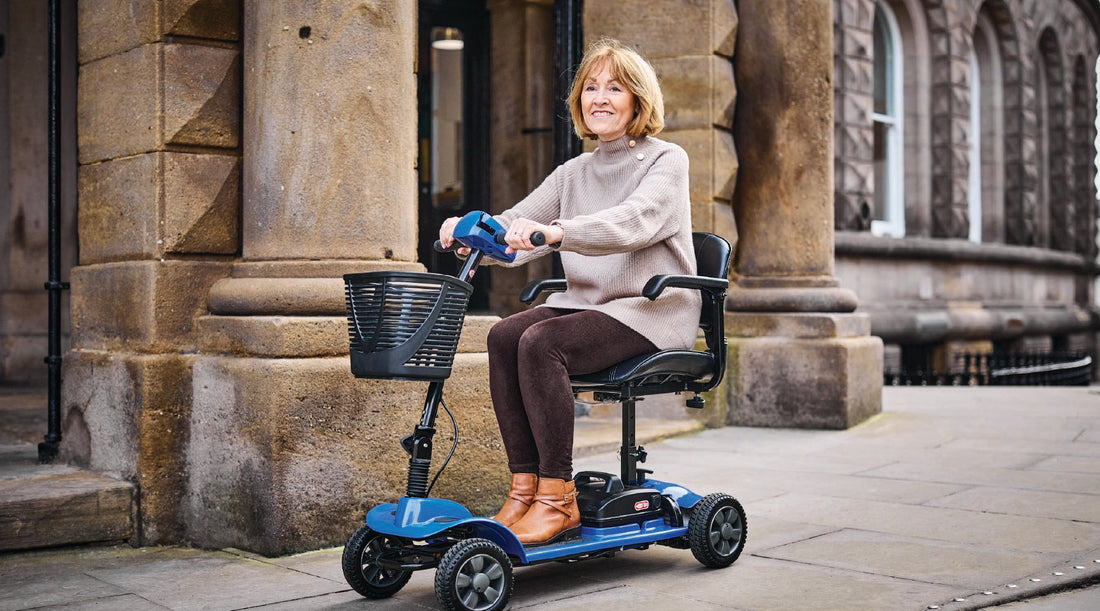Choosing the Right Mobility Scooter: A Complete Buyer’s Guide
Mobility scooters can make a significant difference in the daily lives of individuals with limited mobility, offering independence, convenience, and a greater quality of life. However, with so many models, features, and styles available, choosing the right one can feel overwhelming. This comprehensive guide will walk you through everything you need to consider before purchasing a mobility scooter, so you can find the perfect fit for your lifestyle and needs.
1. Understand Your Needs
The first step in choosing the right mobility scooter is to consider how and where you plan to use it. Ask yourself the following questions:
-
Will you use the scooter indoors, outdoors, or both?
-
Do you need it for short trips or longer journeys?
-
Will you be transporting it in a vehicle?
-
Do you need to navigate narrow hallways or rough terrain?
Your answers will help narrow down your options and ensure you get a scooter that suits your daily routines and environment.
2. Types of Mobility Scooters
Mobility scooters generally fall into three main categories: portable (travel) scooters, mid-size scooters, and large (road-legal) scooters.
Portable/Travel Scooters
-
Lightweight and designed for easy transport.
-
Can often be folded or disassembled.
-
Ideal for indoor use and short trips.
-
Limited battery range (typically 8-12 miles).
-
Lower top speeds (around 4 mph).
Mid-Size Scooters
-
A balance between portability and performance.
-
Suitable for indoor and outdoor use.
-
Better battery life (up to 20 miles).
-
More comfort features like suspension and adjustable seating.
Large/Road-Legal Scooters
-
Built for long-distance travel and rougher terrain.
-
Top speeds up to 8 mph.
-
Road-legal (Class 3) with lights, indicators, and mirrors.
-
Not as easy to transport, but offer maximum stability and comfort.
3. Key Features to Consider
When comparing models, keep an eye out for these essential features:
Battery Range
-
Measured in miles per charge.
-
Consider how far you typically travel each day.
-
Larger batteries mean longer range, but also more weight.
Speed
-
Class 2 scooters: Up to 4 mph (pavement use).
-
Class 3 scooters: Up to 8 mph (road use).
Weight Capacity
-
Check the scooter's maximum user weight.
-
Make sure it comfortably supports your weight, plus any items you may carry.
Comfort
-
Look for adjustable armrests, padded swivel seats, and suspension systems.
-
Larger scooters tend to offer more comfort features.
Controls
-
Ensure the tiller and controls are easy to use and responsive.
-
Try different models to see what feels intuitive.
Storage & Accessories
-
Baskets, rear bags, walking stick holders, and canopies are useful extras.
-
Some models have USB charging ports or cup holders.
4. Transport and Storage
If you plan to transport your scooter in a car, make sure it fits in the boot and can be easily disassembled or folded. Some travel scooters are specifically designed for this purpose.
Consider where you will store the scooter at home. It should be kept in a dry area, preferably near a power outlet for convenient charging.
5. Legal Requirements and Insurance
In the UK, mobility scooters are classified as either Class 2 or Class 3:
-
Class 2: Pavement use only; max speed 4 mph; no registration required.
-
Class 3: Road use permitted; max speed 8 mph (4 mph on pavement); must be registered with the DVLA but no license needed.
Insurance isn’t legally required, but it’s highly recommended to protect against theft, damage, and liability. Many providers offer affordable policies tailored for mobility scooters.
6. Test Before You Buy
Always try before you buy. Reputable suppliers like Eden Mobility offer free home demonstrations, allowing you to test a scooter in your own environment. This ensures a proper fit and gives you the chance to evaluate comfort, control, and ease of use.
Make note of how easy it is to get on and off the scooter, how well it handles your local terrain, and whether the controls are intuitive.
7. Cost and Financing
Mobility scooters can range from a few hundred to several thousand pounds. While price often reflects features and build quality, it’s essential to choose a scooter that fits your budget without compromising safety or reliability.
Look into financing options, VAT relief (available for eligible users in the UK), and possible grants from charities or local authorities.
8. After-Sales Support and Warranty
Choose a supplier that offers strong after-sales support. This includes:
-
A solid warranty (usually 12-24 months).
-
Servicing and repair options.
-
Availability of spare parts.
Eden Mobility, for example, provides ongoing support, servicing, and maintenance to ensure your scooter remains in top condition.
9. Top Models to Consider
Here are some popular models across different categories:
-
Eden Pathrider 10 Deluxe (Mid-Size): Comfortable, great range, and all-round suspension.
-
Eden Mercury (Large): Road-legal with high performance and luxury features.
-
Eden Go-Go Elite Traveller (Portable): Lightweight and ideal for quick trips or travel.
Each model suits different lifestyles, so speak with a specialist to find the best match.
10. Final Thoughts
Choosing the right mobility scooter is about more than just specs — it's about improving your quality of life. By understanding your needs, exploring your options, and testing a few models, you'll find a scooter that brings confidence, freedom, and comfort to your everyday routine.
Eden Mobility offers expert advice, free home demonstrations, and a wide range of scooters to help you find the perfect fit. Contact your local branch today to get started on your journey toward greater independence.

